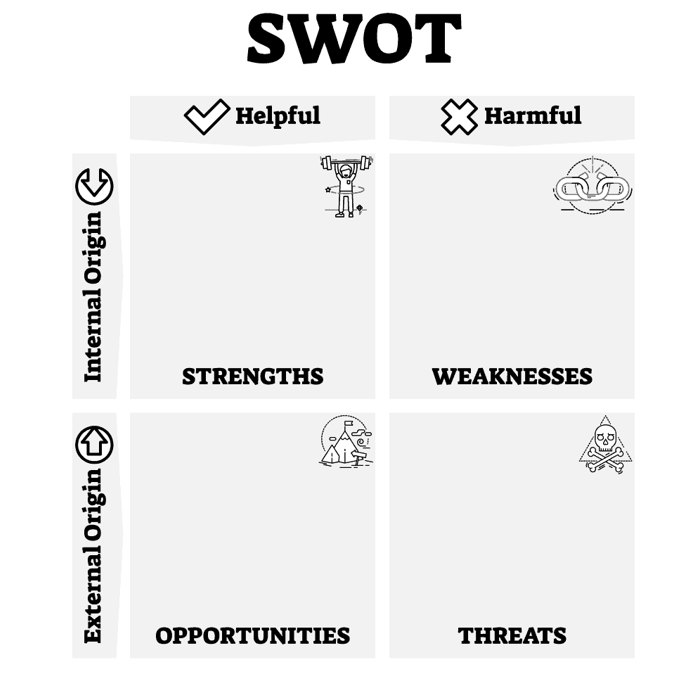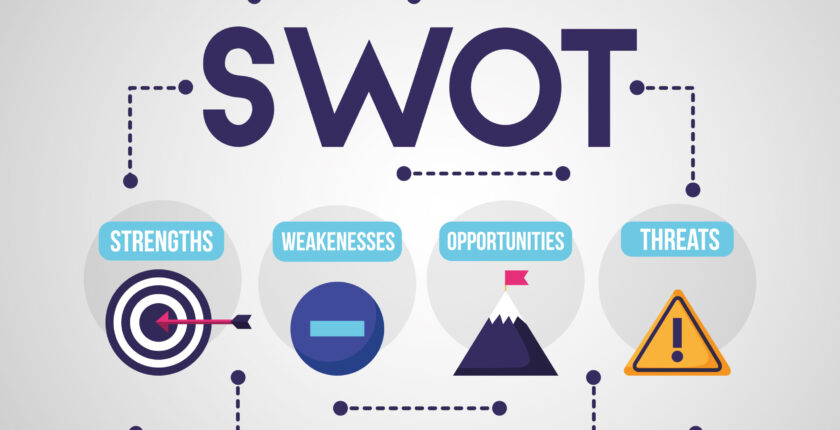SWOT analysis is a tool for analyzing the Strengths, Weaknesses, Opportunities, and Threats that firms face. Following identifying the business objectives, management must identify both internal and external challenges that impede the achievement of those objectives within the company. The SWOT analysis is used in strategic planning to understand better the environment in which a company’s success is decided. Learners must first identify and comprehend the SWOT analysis framework to fully comprehend the SWOT analysis tool.
SWOT Analysis Framework

According to the SWOT template, the strengths and weaknesses of the business are both internal characteristics of the firm, which learners should assess while analyzing the achievement of particular business objectives. External elements from outside the organization are the opportunities and risks, which learners should examine and investigate to ensure that they grasp the issues that may impact the organization. Nonetheless, the strengths and opportunities are advantageous to businesses and should be exploited. Conversely, the flaws and threats are likely to influence negatively and are potentially dangerous. To effectively achieve business success, the management should work on them and brainstorm the strategies they should implement to address them.
SWOT analysis aids management in assessing the numerous challenges that affect the internal and external company environments, allowing for more effective decision-making. Because the SWOT analysis variables are adaptable, the process should be repeated frequently to guarantee that the assumptions made when making specific company decisions are regularly revisited to achieve corporate success.
SWOT Analysis’ Benefits
- SWOT is a straightforward framework with only four factors to consider.
- Creates a conducive atmosphere for the framework’s users to engage in critical thinking.
- Assists business management in identifying the company’s strengths and evaluating how well they can use opportunism to impact the company positively.
- The tool assists managers in identifying business weaknesses and anticipating dangers that may impact future business operations. This allows them to take action to minimize potential risks and mitigate their effects.
SWOT analysis has some drawbacks.
- The data obtained from the analysis may be simplified, resulting in management making decisions based on insufficient data.
- The assumptions derived from the SWOT analysis may or may not reflect the current state of the business environment.
- Conducting a SWOT analysis can be demanding and challenging, especially if the company is large and complex.
- Management must be prudent to ensure that the modifications made after the research are based on the business’s strengths, which may be difficult for the analyst.
- Because the SWOT components change frequently, the analyst must regularly conduct the analysis process to make the best decision. This could be difficult for the management.
SWOT is a tool that assesses the strengths, weaknesses, opportunities, and threats that firms face.
Reference
CIPD (2020) SWOT Analysis, available at https://www.cipd.co.uk/knowledge/strategy/organisational-development/swot-analysis-factsheet [Accessed 28th Jan 2021]
Gürel, E., & Tat, M. (2017). SWOT analysis: a theoretical review. Journal of International Social Research, 10(51)
Related Articles:



